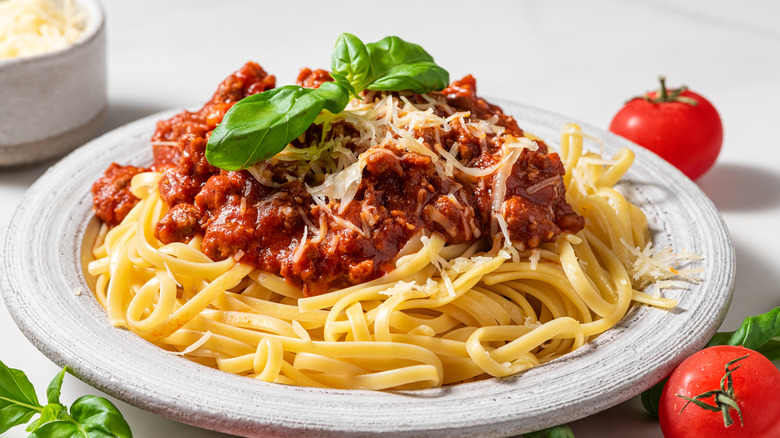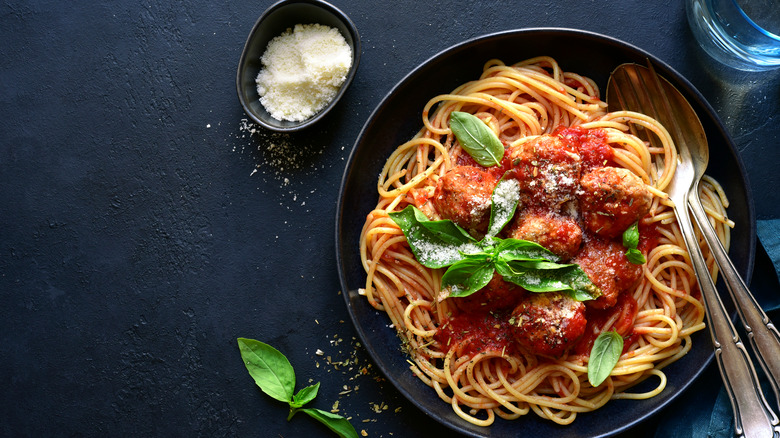The Pasta Sauce Faux-Pas You Will Never See In Italy
Italians are passionate about many things, and pasta is no exception. If they feel like an injustice is done to their beloved cuisine, they have no problem sharing that. Luckily, you usually never have to wonder what is on Italian's person minds when it comes to food, as their passion is expressed in everything they do. Pineapple on pizza? Blasphemy. Heavy cream in Alfredo sauce? Not cool. Are you cutting your pasta? You better be ordering off the kid's menu. The list goes on and on.
Pasta sauce, or more specifically, the application method, is no exception from the extended list of faux pas you never want to get caught doing in Italy. There are many countries, including the U.S. that make the mistake of dolloping a spoonful of sauce on top of already-cooked noodles on the dinner plate. This practice is wrong on so many levels for true pasta connoisseurs.
In authentic Italian cuisine, the sauce and the pasta always meet way before gracing the dinner table. The sauce and pasta should be heated in a saute pan, cooking for at least a minute. This allows some of the starchiness from the pasta to mix in, while also allowing the pasta to absorb the sauce, creating an overall more luscious, cohesive dish. The image of a plain plate of spaghetti with a spoonful of red sauce and meatballs in the middle on top is enough to stop someone in Italy in their tracks.
Pasta the right way
Italians are estimated to eat around 60 pounds of pasta, per person, per year, while Americans only consume approximately 20 pounds (via Life in Italy). So they know what they are doing. In fact, the first recorded recipe of pasta cooked with tomatoes was published around the 1830s, originating in Naples, Italy. This timeline may be shocking as one may assume that the dish has been around for much longer. Although the Spanish introduced Italy to tomatoes in the 16th and 17th centuries, tomatoes were widely viewed as poisonous by Italians and many Europeans, so they were mainly used for decoration (via Smithsonian Magazine).
Thankfully, Italians could see past the fear of tomatoes and bring them together with glorious pasta to propel the world of marina sauce, and so many other's forward. Whether it's a creamy carbonara, a light garlic and olive oil, or a classic pomodoro, pasta is a vessel for heavenly sauce. While it may seem easier at first to serve pasta and the sauce separately, it almost always does the overall dish a disservice.
Resist the urge, and cook them together to marry the unique flavors together and create a memorable meal. Remember, if Italians have advice on preparing a pasta dish best, it is wise to take it.

